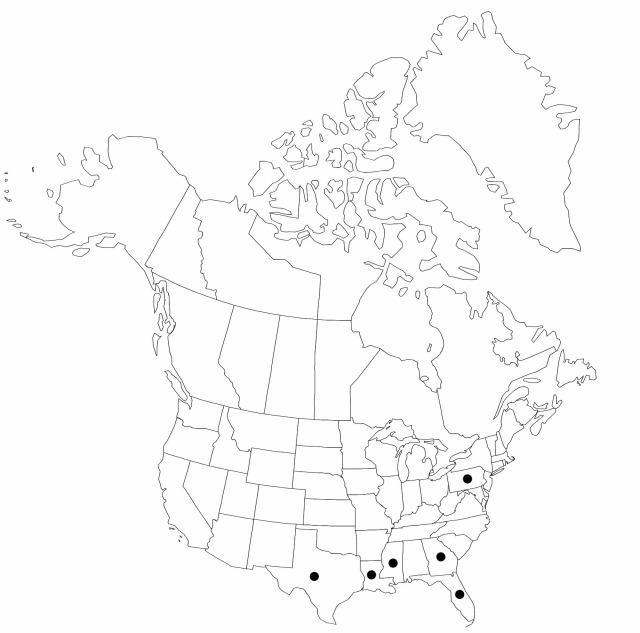Cyperus ochraceus
Enum. Pl. 2: 325. 1805.
Herbs, perennial, cespitose; rhizomes oblique. Culms roundly trigonous, 20–50(–80) cm × 1–3 mm, glabrous. Leaves 3–11, V-shaped, 12–40 cm. Inflorescences: heads loosely to rather densely hemispheric, 15–30 mm diam.; rays 5–10, 2–12 cm; 2d order rays occasionally produced, 5–25 mm; bracts 4–8, approximately horizontal to ascending at 30°, V-shaped, 10–36 cm × 1.5–4 mm, margins glabrous. Spikelets (4–)10–30, greenish, grayish, or stramineous, oblong to linear-oblong, compressed, (5–)7–10(–35) × 2–3 mm; floral scales 10–25(–85), laterally yellowish brown, medially yellowish or brownish, laterally ribless, medially 2-ribbed with groove between ribs, broadly ovate (widest in proximal 1/2), (1.2–)1.5–2 × 1.2–2 mm, apex obtuse (declined (45–)60–90º from rachilla). Flowers: stamen 1; anthers oblong, 0.8–1.2 mm, connective not prolonged; styles basally thickened, confluent with summit of achene, 0.6–1.2 mm; stigmas 0.3–0.6 mm. Achenes reddish brown to dark purplish brown, dull or more often iridescent, stipitate, broadly ellipsoid, 1–1.5 mm × 0.4–0.6(–0.7) mm, base cuneate to ± attenuate, stipe 0.1–0.2 mm, apex acute, beak 0.1–0.5 mm, surfaces reticulate with network of low ridges.
Phenology: Fruiting summer.
Habitat: Damp, disturbed soils, ditches, marshes
Elevation: 0–200 m
Distribution

Fla., Ga., La., Miss., Pa., Tex., Mexico, Central America, South America.
Discussion
In Pennsylvania, Cyperus ochraceus has been recorded in areas where ballast has been discarded.
Selected References
None.
